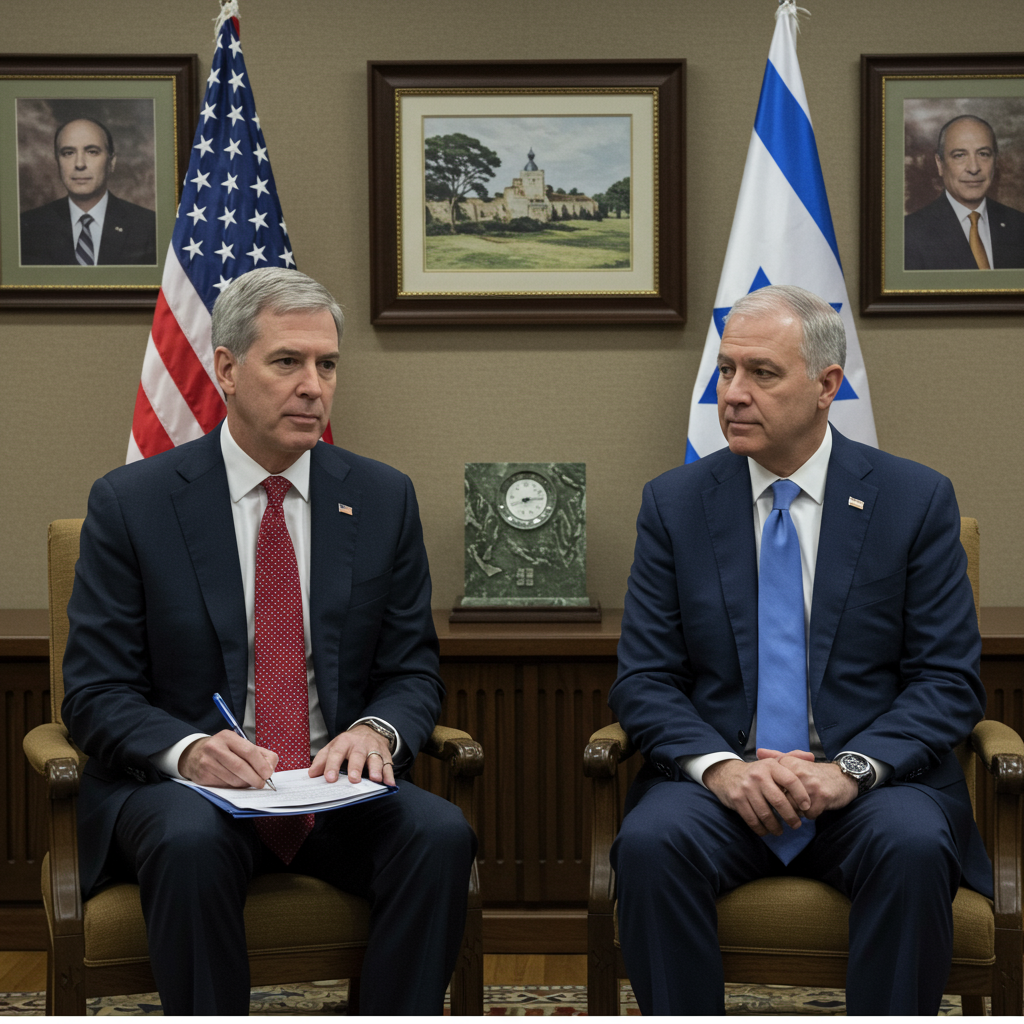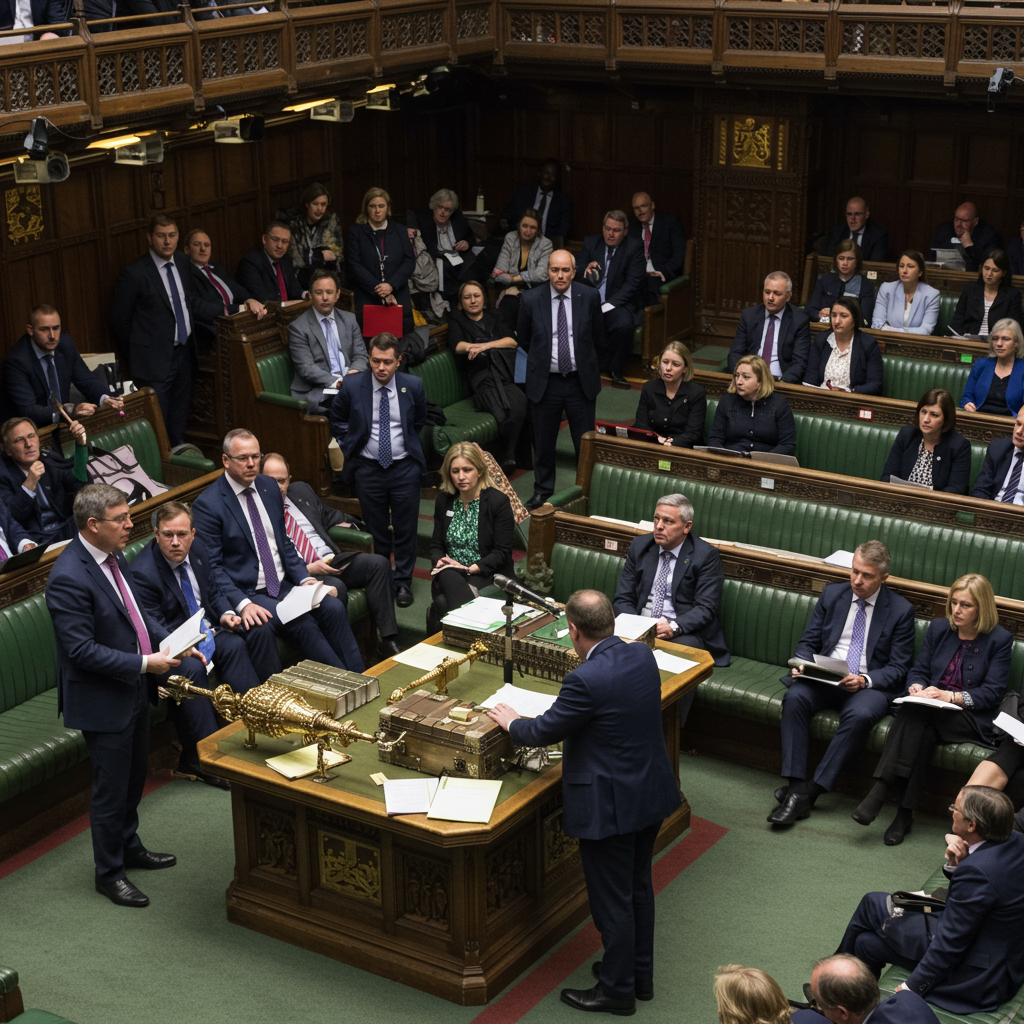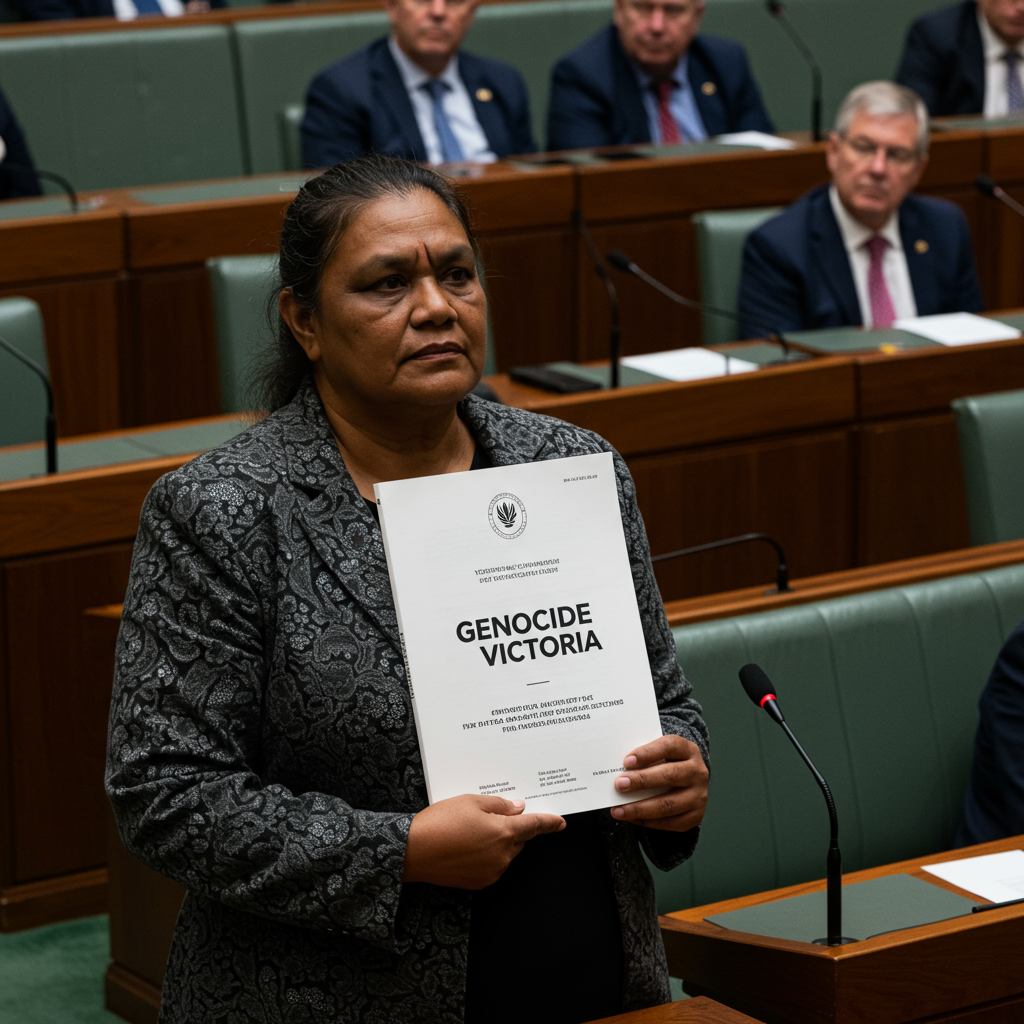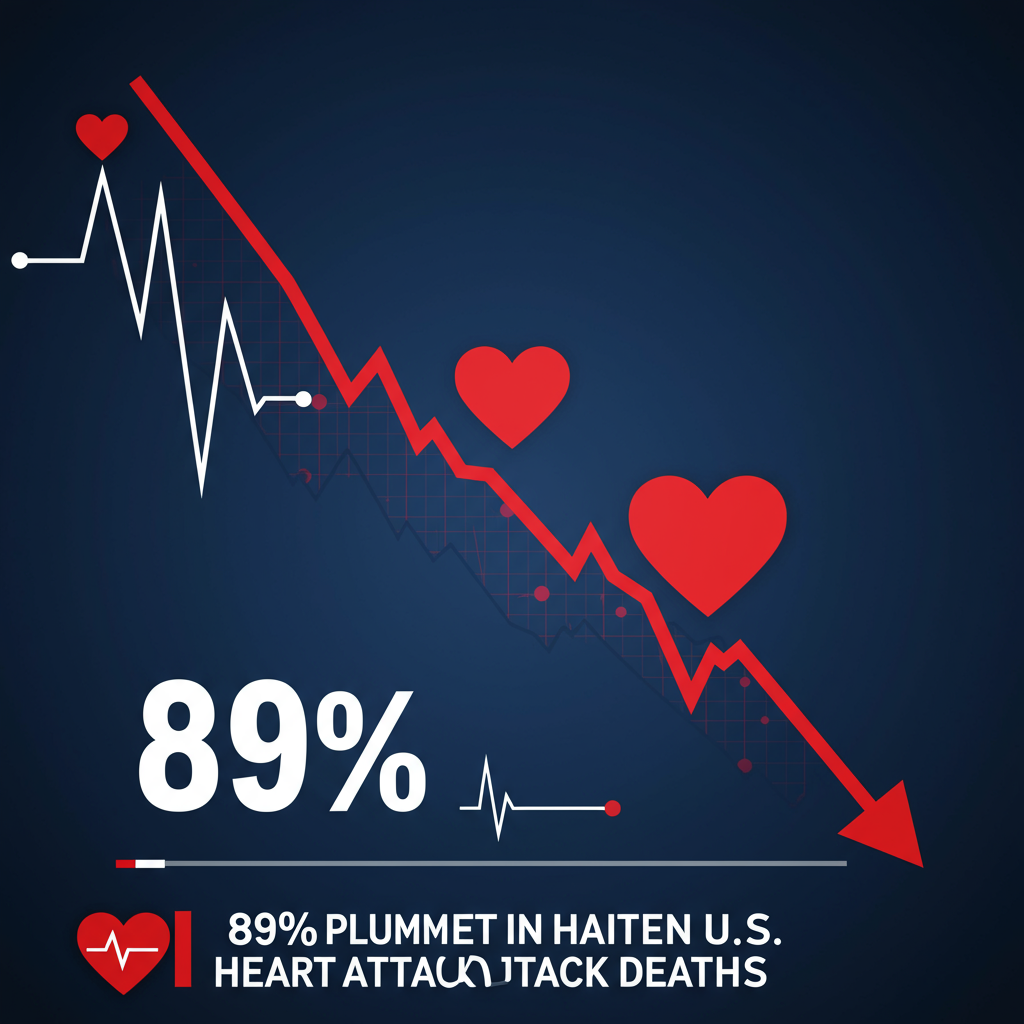A high-stakes diplomatic effort is underway as the United States’ top Middle East envoy, Steve Witkoff, has conveyed to families of hostages held in Gaza that a “very, very good plan” is in motion to conclude the protracted conflict. This significant announcement comes amidst escalating global concern over the dire humanitarian situation in the Palestinian territory and stalled ceasefire negotiations. Witkoff’s visit to Israel, including critical meetings with Prime Minister Benjamin Netanyahu and an inspection of a controversial aid site, underscores the urgent push for a resolution to the nearly 22-month-old war.
Diplomatic Pursuit: The US’s “Good Plan” for Gaza
During a recent meeting in Israel with families of individuals held captive by Hamas, US Special Presidential Envoy Steve Witkoff shared optimistic news, stating a comprehensive strategy is being forged to bring an end to the Gaza war. A recording of the meeting, reviewed by news agencies, captured Witkoff’s assertion: “We have a very, very good plan that we’re working on collectively with the Israeli government, with Prime Minister Netanyahu … for the reconstruction of Gaza. That effectively means the end of the war.” This strategic vision places the reconstruction of the devastated Gaza Strip at its core, signaling a transition from conflict to recovery.
President Donald Trump’s administration has prioritized de-escalating the Middle East conflict, viewing the release of all hostages as a “sacred mission.” Witkoff reportedly assured families, “We will get your children home and hold Hamas responsible for any bad acts on their part.” He further indicated access to intelligence regarding the captives’ well-being, stating, “We know who is alive, and someone will be to blame if they don’t come out alive. The US stands behind this statement.” This robust commitment reflects a firm US stance on accountability and a determination to secure the return of the remaining hostages.
The Contentious Issue of Disarmament
A critical component of the envisioned peace plan, as suggested by Witkoff, is the disarmament of the Palestinian militant group Hamas. However, this proposal faces immediate and strong resistance from Hamas itself. The group, which has controlled Gaza since 2007, has consistently stated it will not lay down its weapons. Hamas leadership reiterated that “armed resistance” would only cease if an “independent, fully sovereign Palestinian state with Jerusalem as its capital” is firmly established. This fundamental disagreement highlights a major impediment to achieving a lasting ceasefire and comprehensive peace in the region.
Adding to the complexity, a senior Israeli official, following Witkoff’s meeting with Netanyahu, indicated an emerging understanding between Washington and Israel. This understanding reportedly focuses on moving beyond a partial hostage release to a plan encompassing the release of all captives, the disarmament of Hamas, and the demilitarization of the Gaza Strip. These objectives echo Israel’s long-standing key demands for ending the war.
Gaza’s Unfolding Humanitarian Catastrophe
The ongoing Gaza conflict has plunged the territory into an unprecedented humanitarian crisis, marked by widespread hunger and a severely debilitated healthcare system. International bodies and aid organizations report a catastrophic situation, with Gaza’s health ministry describing major hospitals as critically overwhelmed, forced to accommodate patients in corridors and on floors. The director of al-Shifa Medical Complex has accused Israel of intentionally destroying Gaza’s health system through siege and bombardment, warning the region has reached “the final and most dangerous stage of famine.” Tragically, deaths from malnutrition, including a 17-year-old Palestinian, have been reported amidst the crisis.
Despite some limited improvements, aid entering Gaza remains “very insufficient” according to Germany, a key international player. Reports indicate a drastic shortfall, with only a fraction of the necessary daily aid trucks reaching the population. Furthermore, a significant portion of aid trucks are reportedly looted before distribution, with Gaza’s government media office attributing this to “systematically and deliberately” enforced “security chaos” by Israel. While US Envoy Witkoff asserted there is “hardship and shortage,” not “starvation” in Gaza, UN-mandated experts and humanitarian agencies contradict this, warning of an “unfolding famine” and growing evidence of severe malnutrition and deaths among vulnerable civilians. This conflicting narrative underscores the deep divisions and challenges in addressing the crisis.
Obstacles to Aid Delivery and Civilian Safety
The challenges in aid delivery are multifaceted. UN agencies criticize airdrops as insufficient and emphasize the necessity of significantly more land-based aid, with eased access. Former UN humanitarian chief Martin Griffiths described aid drops as a “last resort” due to inherent risks, including injuries and deaths from the drops themselves and the lack of on-ground systems to prevent looting.
Disturbingly, there are numerous reports of Israeli forces firing on and killing Palestinians attempting to receive aid. Incidents include multiple fatalities near Wadi Gaza and the Netzarim Corridor, with aid seekers being targeted while waiting for distributions. These tragic events further complicate humanitarian efforts and exacerbate the suffering of Gaza’s 2.2 million people. Israel, for its part, blames Hamas for the suffering and claims it is taking steps to facilitate more aid, including temporary pauses in fighting and announcing protected routes for aid convoys.
The Plight of the Hostages and Stalled Negotiations
The fate of the Israeli hostages remains a central and profoundly distressing aspect of the Gaza conflict. Of the approximately 250 individuals initially seized by Hamas on October 7, 2023, around 50 are believed to remain in Gaza, with official figures indicating only 20 of them are still alive. This contrasts slightly with other reports citing 49 held and 27 confirmed dead by the Israeli military. The families of these captives are in immense anguish, desperately calling for an immediate and comprehensive agreement to secure their loved ones’ return.
Hamas has intensified pressure by releasing distressing videos of hostages, including a second video of 24-year-old Evyatar David. In the video, David appears emaciated, shown digging a hole he says is for his own grave. His family condemned the footage as “vile hunger campaign” propaganda, accusing Hamas of deliberately starving their son, an act they describe as “one of the most horrifying acts the world has seen.” These videos are intended to urge a ceasefire and highlight the dwindling time for the captives.
Indirect negotiations, mediated by the United States, Egypt, and Qatar, aimed at securing a 60-day ceasefire and a hostage release deal, reached a deadlock last week. This stalemate has intensified domestic pressure on Prime Minister Benjamin Netanyahu’s government to find alternative solutions for the hostages’ return, both alive and dead. The Israeli army’s chief of staff has warned that combat would continue “without rest” if negotiations failed.
International Pressure and the Path Forward
The ongoing devastation in Gaza and the worsening starvation crisis have triggered a significant global outcry. This pressure extends to Prime Minister Netanyahu’s government, facing increased international calls to open Gaza’s borders to more food aid. The crisis has also prompted several Western powers to signal their intent to recognize a Palestinian state. For instance, Canada intends to recognize Palestinian statehood at the 80th session of the United Nations General Assembly in September, predicated on Palestinian Authority reforms and elections. This shift in diplomatic stance could potentially aid future negotiations for a two-state solution.
The humanitarian crisis has also influenced political sentiment in the United States. A “historic” US Senate vote, with a significant number of Democrats supporting a block on arms sales to Israel, has been hailed by some as a sign of mounting outrage and Congress “gradually catching up to the American people.” Protests worldwide, including in South Africa, have amplified concerns over the Gaza hunger crisis.
The conflict’s human cost remains staggering. The Hamas-led attack on southern Israel on October 7, 2023, resulted in approximately 1,200 deaths and the abduction of around 250 individuals. Since then, Israel’s offensive in Gaza has led to the deaths of more than 60,000 Palestinians, predominantly civilians, according to Gaza health officials whose figures the UN generally deems reliable. Recent reports from Gaza’s civil defense agency indicate continued fatalities from Israeli fire, including incidents at areas where Palestinians awaited food distribution.
Frequently Asked Questions
What is the US ‘plan’ to end the Gaza war, according to Envoy Witkoff?
According to US Special Presidential Envoy Steve Witkoff, the US is working with the Israeli government on a “very, very good plan” to end the Gaza war. This plan primarily involves the reconstruction of Gaza, which would signify the effective conclusion of the conflict. Additionally, a senior Israeli official indicated this plan aims for the release of all hostages, the disarmament of Hamas, and the demilitarization of the Gaza Strip, aligning with key Israeli demands.
How severe is the humanitarian crisis in Gaza currently?
The humanitarian crisis in Gaza is extremely severe. Reports from various sources confirm widespread hunger, a collapsed healthcare system, and a critical shortage of aid. Major hospitals are overwhelmed, and there are warnings of an “unfolding famine” by UN-mandated experts. Aid delivery is hampered by insufficient supplies, logistical challenges, and incidents where Israeli forces have reportedly fired on Palestinians attempting to receive food. Tragically, numerous deaths from malnutrition have been recorded, including children.
What are the primary obstacles to a lasting peace and hostage release in Gaza?
The primary obstacles include the fundamental disagreement over Hamas’s disarmament; Hamas insists it will not disarm unless an independent, sovereign Palestinian state with Jerusalem as its capital is established. Stalled indirect negotiations, ongoing military operations, and the deeply entrenched distrust between the parties further complicate efforts. The dire humanitarian situation and conflicting narratives regarding conditions on the ground also create significant challenges for establishing a stable environment conducive to peace.
The future of the Gaza Strip and the wider Middle East remains precariously balanced. While diplomatic efforts intensify and plans for ending the war are discussed, the humanitarian catastrophe persists, and the fate of the remaining hostages hangs in the balance. The profound challenges of disarmament, reconstruction, and establishing a lasting peace demand unprecedented international cooperation and political will.




